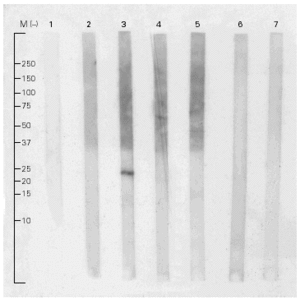Type I cereal ingestion response is a special type of food sensitisation because the patient usually is not aware of this allergy1. The reason may be that clinical symptoms do not appear immediately after ingestion of cereal products and, in some cases, may not appear if the patient does not perform exercise at a particular time2.
Cereal baby food as a cause of anaphylactic reaction have been exclusively described in children3. We report a severe anaphylaxis in a 34 years old man, carpenter, previously diagnosed from occupational asthma due to the rye flour added to the wood boards4. He normally tolerated bread and other cereal-based products without any reaction but suffered from oral syndrome after drinking beer and eating mustard. After testing a spoonful of his baby cereal food prepared for his wife (nongluten rice and corn formula), he suffered from a sudden onset of respiratory and gastrointestinal symptoms, paleness and reduced level of consciousness that required emergency room treatment. Skin prick test (SPT) performed with 32 aeroallergens and 20 common food allergens showed no reaction except for wheat, barley and rye flours and peanut and mustard. Low levels of specific IgE were detected by means of the Pharmacia CAP system to the SPT-positive allergens (class 2). A double-blind-placebo-controlled-food-challenge (DBPCFC) performed with 0.1 g of cereal formula in lemon juice was positive (pharyngeal itching followed by cough and gastrointestinal discomfort). Figure 1 shows the result of the IgE-immunoblotting experiment carried out with the patient'serum. A broad and non-defined band with a molecular weight higher than 37 kDa is detected in the baby food, flours and mustard extract. In addition, a defined 23 kDa band is detected in the corn flour extract.
Figure 1.--IgE-immunoblotting experiment with patient's serum. 1: Negative control (buffer). 2: Baby food extract. 3: Corn flour extract. 4: Rice flour extract. 5: Mustard extract. 6 and 7: Negative control with baby food extract and two sera from baker's asthma patients.
Food allergy is a widespread problem within pediatrics. Certain baby formulae appear to be hypoallergenic but they may lead to severe immunological responses. In our case the first contact with the allergen was the inhalation route. The patient's history of cereal allergy is currently not fully understood but may possibly be a life long event.






